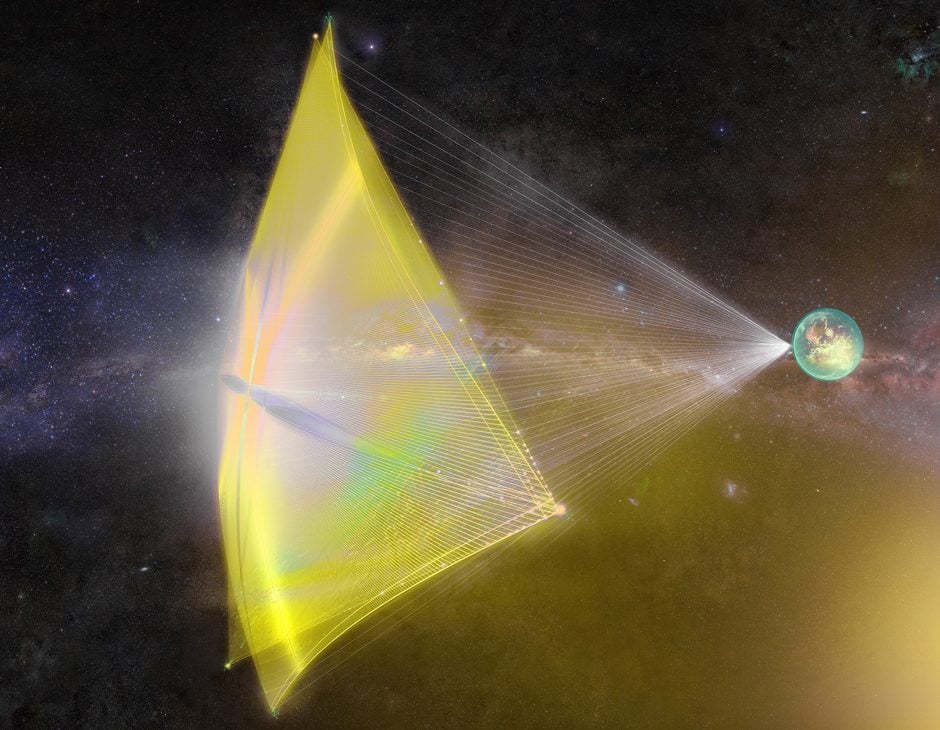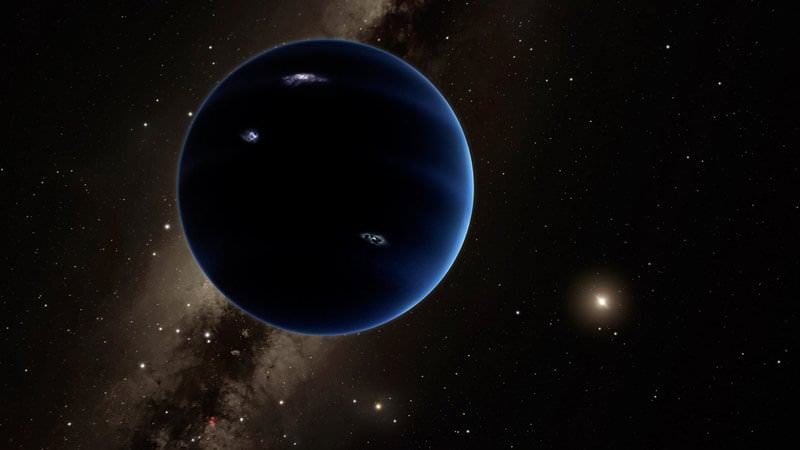
Meet the largest single chondrite in Texas.
Continue reading

Two galaxies collide, and one super-massive black hole is stripped almost naked of stars.
Continue reading

A new study from a team of Japanese researchers shows that the rings of the gas giants might be the remains of dwarf planets, which they encountered billions of years ago
Continue reading

Continue reading

Determining which ocean is the deepest is tricky, but on average, the Pacific Ocean is deeper than the rest, thanks to the extreme depth of the Mariana Trench
Continue reading

NASA's Scout Program for the early detection of asteroids passed it's first test, giving us 5 days notice of 2016 UR36's close encounter with Earth.
Continue reading

Continue reading

Water has been showing up in all sorts of unexpected places in our Solar System, such as the Moon, Mercury and Saturn's moon Ganymede. Add one more place to the list: Asteroid 16 Psyche. This metal-rich asteroid may have traces of water molecules on its surface that shouldn't be there, researchers say.
Continue reading

Did you hear that the Universe has 10x the number of galaxies? How did astronomers discover this, and what does it mean for the number of stars?
Continue reading

Rain is part of Earth's all-important hydrological cycle, where water evaporates from the Earth's surface, condenses, and falls from the sky.
Continue reading

An small object noticed in some of the Curiosity rover's images has been identified as a small meteorite, likely composed of iron-nickel
Continue reading

The Cassini probe has found more features on Titan that resemble Earth, steep river valleys that empty into its largest methane lake
Continue reading

At dusk on November 2, skywatchers will see a beautiful crescent Moon pair up with the planets Venus and Saturn.
Continue reading

Continue reading

Continue reading

SpaceX is making significant progress in replicating the failure in the helium pressurization system that led to the catastrophic launch pad explosion of the firms Falcon 9 rocket during a routine fueling test at their Florida Space Coast launch complex on September 1.
Continue reading

Continue reading

A recent study by an international team of scientists looked at Project Starshot and assessed the likelihood of its success, based on several design features
Continue reading

New photos from NASA's Mars orbiter reveal the Schiaparelli lander crash in finer detail.
Continue reading

Recent images from the Cassini space probe show that Saturn's hexagonal polar storm is changing, which may be due to seasonal variation
Continue reading

Continue reading

Continue reading

A new study from the University of Bern indicates that most planets that orbit red dwarf stars might be water worlds, which could have a serious effect on the hunt for extra-terrestrial life
Continue reading

If you're going to send a spacecraft to Mars, you've got to know that place has an insatiable hunger for our plucky robot companions. Why is this place cursed?
Continue reading

Continue reading

Continue reading

Between a New Moon and a Full Moon, the Moon goes through its "waxing" phases, where its surface increases in luminosity
Continue reading

A new study produced by researchers at Caltech links the existence of Planet 9 to the axial tilt of our Sun, something that was previously unexplained
Continue reading

Continue reading

Continue reading

Continue reading

If science fiction has taught us anything, it's that nothing makes a person go crazier than the harsh isolation of deep space. Will we all go crazy out there, among the stars?
Continue reading

This Halloween weekend's top astronomical event features something that you won't see in the sky: a Black Moon.
Continue reading

Humans have wondered how many planets could exist within our Galaxy, and some of our best estimates say there could be ten of billions!
Continue reading

At a joint meeting in Pasadena, California last week, European and American scientists were treated to some of the latest findings about Saturn's moon Titan.
Continue reading

Molecules are the basic buildings blocks of life and matter, and our understanding of them has evolved considerably over time.
Continue reading

Continue reading

Magnetic fields are fascinating things. They are intrinsic to Iron magnets, but can also be generated by electrical circuits and even planets!
Continue reading

MIT and other institutions are programming NASA's R5 robot to help astronauts explore Mars and other worlds beyond!
Continue reading

It appears that Europe's Schiaparelli Mars lander crashed-landed on the planet's surface and may have exploded.
Continue reading

A new study reveals that Rosetta's Comet likely spent billions of years chilling in the Kuiper Belt before chance interactions with Neptune and Jupiter wrangled it into the inner Solar System.
Continue reading

Continue reading

The smaller of Mars' two moons - Deimos - is a strange mysterious satellite. And while its origins are still not clear, future missions might remedy that!
Continue reading

Don't bother stocking up on candles. There won't be 15 days of darkness in November.
Continue reading

Continue reading

We've talked about supernovae plenty of times, but what about just regular, plain old novae? What are they, and how are they different from the star destroying explosions we know and love?
Continue reading

Continue reading

Dr, Gerald Jackson and Hbar Technologies LLC are looking to crowdsource the creation of the world's first antimatter engine!
Continue reading

Astronomers have found 234 stars that are acting suspiciously like signals sent by extra-terrestrials.
Continue reading

After a long journey, the ExoMars 2016 orbiter is safe and doing well, but the state of the lander is unknown.
Continue reading


















































